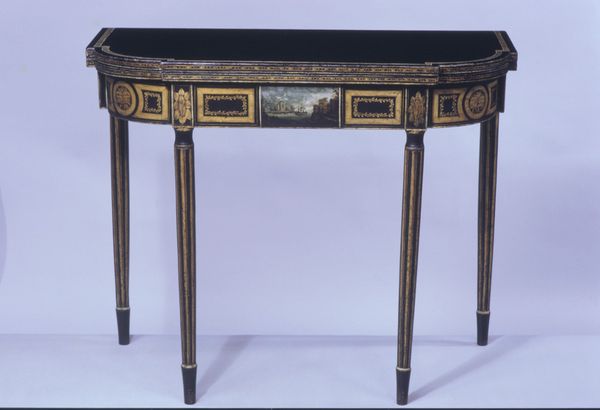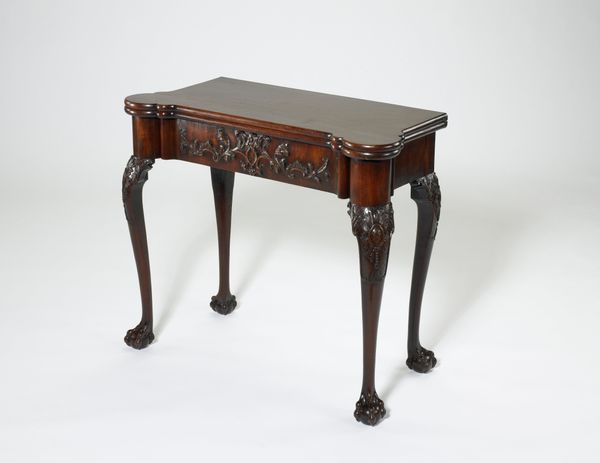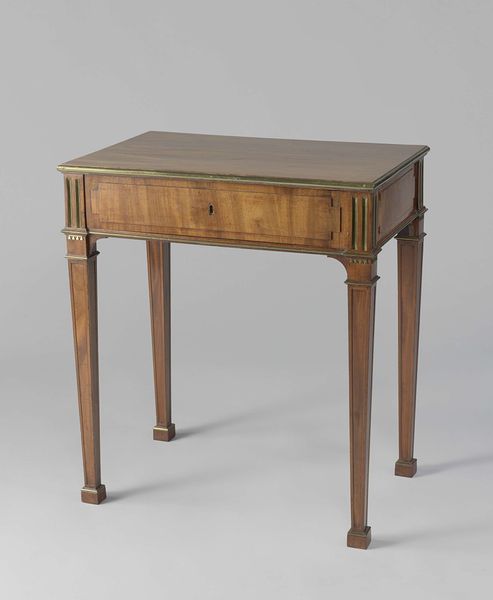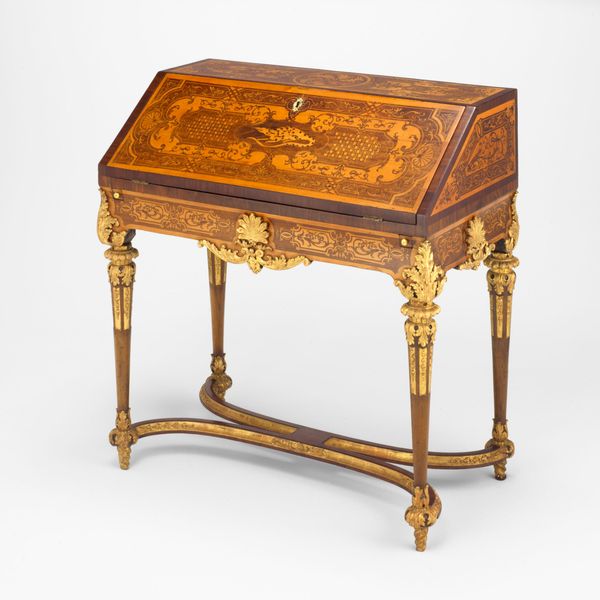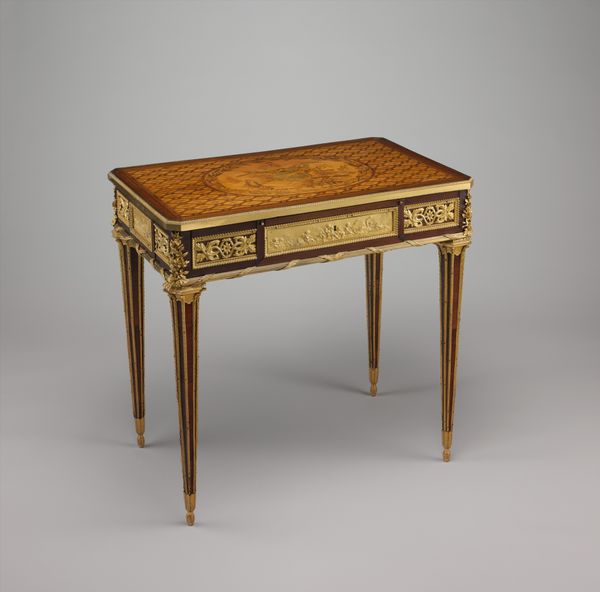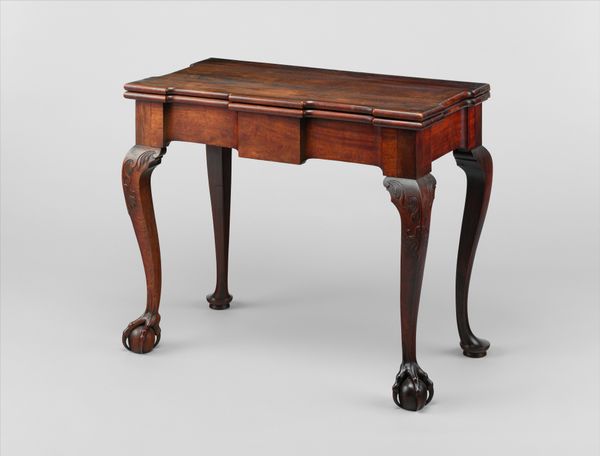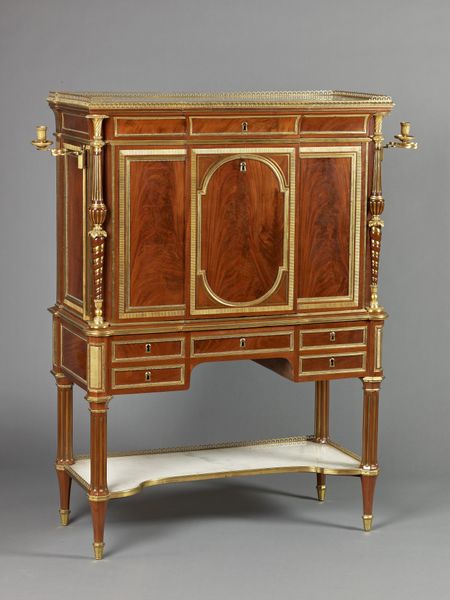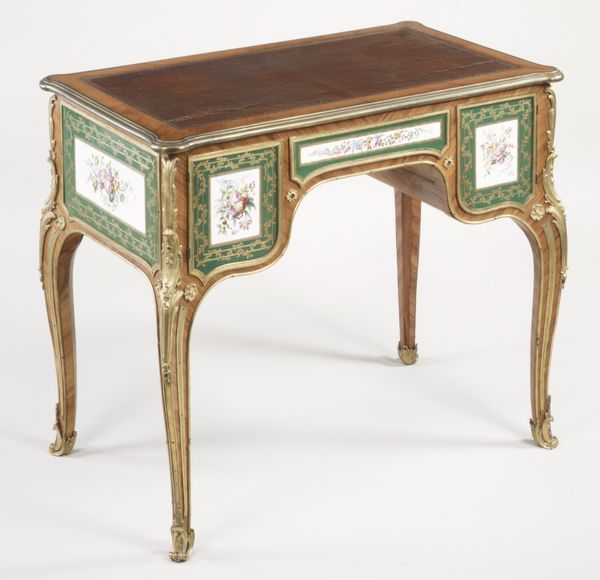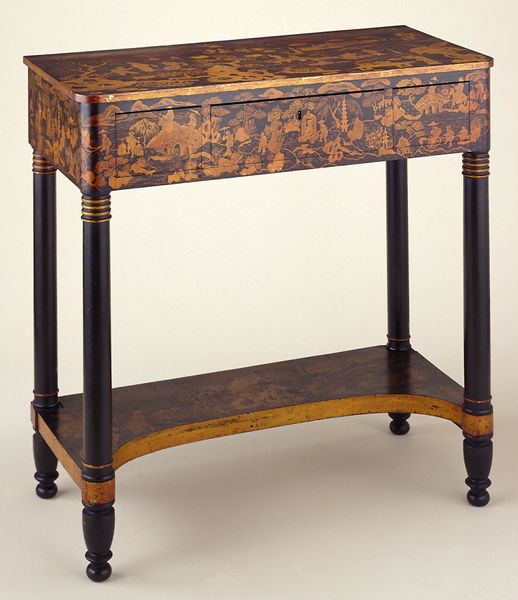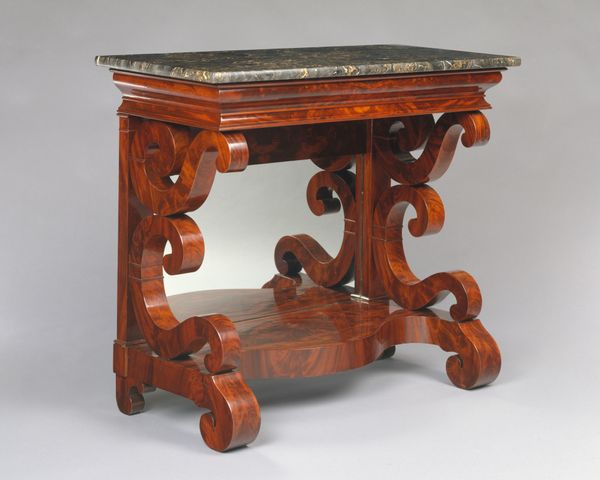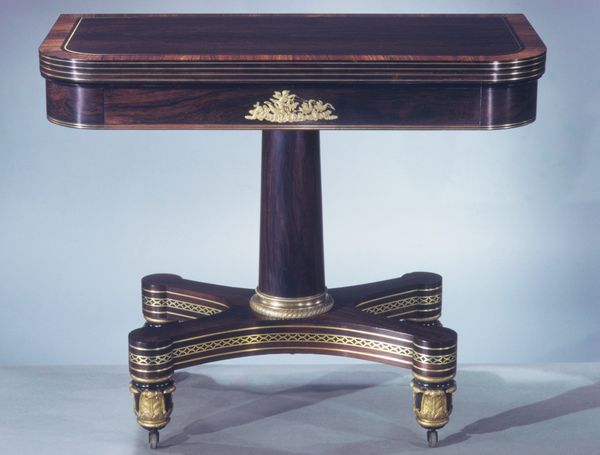
carving, wood
#
neoclacissism
#
carving
#
furniture
#
wood
#
decorative-art
Dimensions: 81.9 × 88.3 × 39.7 cm (32 1/4 × 34 3/4 × 15 5/8 in.)
Copyright: Public Domain
Editor: Here we have "Pier Table," created sometime between 1813 and 1825 by Thomas Emmons. The craftsmanship with wood is striking, and the addition of carving suggests a high level of skill. I'm intrigued by how it merges functionality with decorative elements. What's your take on this piece? Curator: What stands out to me is the complex relationship between labor and status that this object embodies. Consider the time and resources invested in acquiring the high-quality wood, crafting the elaborate carvings, and applying the finishes. Who had access to this level of craftsmanship and materials during that period? Editor: So you're suggesting the table is not just a decorative object, but a statement about resources? Curator: Exactly. The production of such an item involved skilled labor – likely specialized cabinet makers, carvers, and finishers. The table speaks to the consumer's ability to commission and own such labor-intensive, material-rich objects, thus signalling wealth and social position. The materials themselves become a signifier. What kind of statement is the artist trying to make? Editor: I never considered it in that light before, but that really shifts how I see it. So the exquisite carving isn't just aesthetic, but reflects the value placed on skilled craftsmanship at that time? Curator: Precisely. Moreover, consider how the act of consuming and displaying this table reinforced social hierarchies. Owning such a piece was a way to perform one's status and participate in a culture of elite consumption. Editor: That makes perfect sense. The value shifts from simply aesthetic to a complex network of labor, materials, and social standing. Thank you. Curator: Absolutely. Now, when we consider decorative arts, we need to reflect on the economic implications tied to these pieces and understand how they were made to be integrated into social culture and its value.
Comments
No comments
Be the first to comment and join the conversation on the ultimate creative platform.
